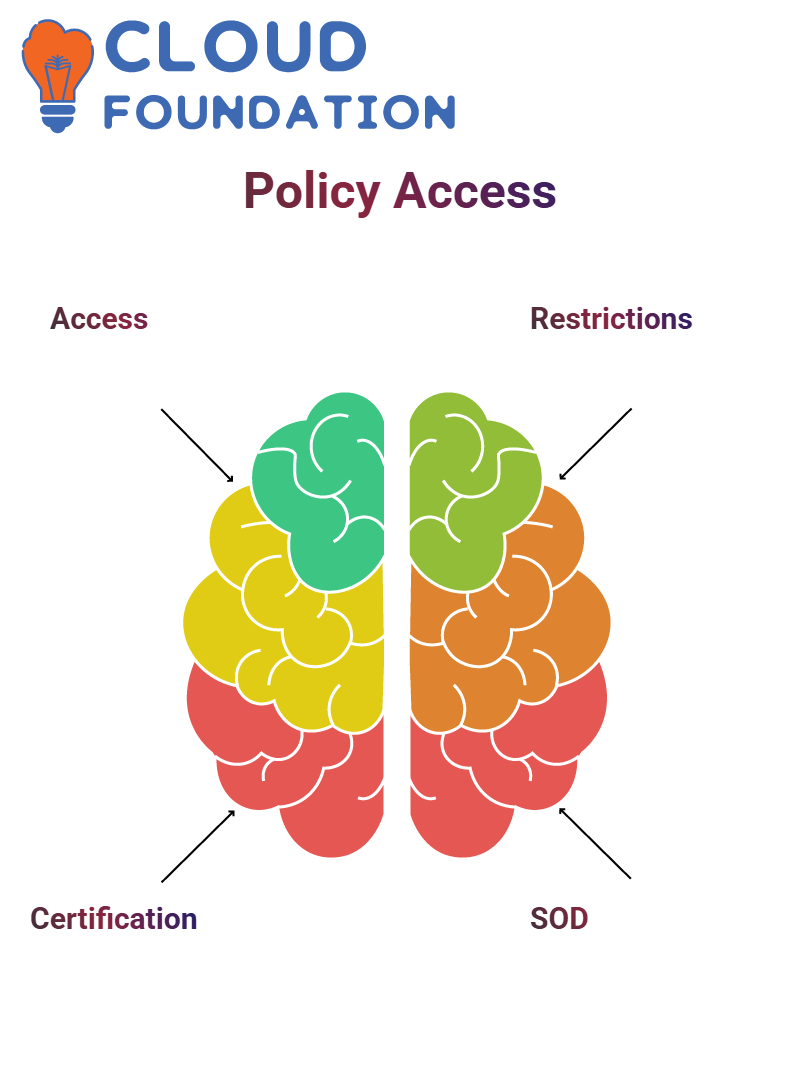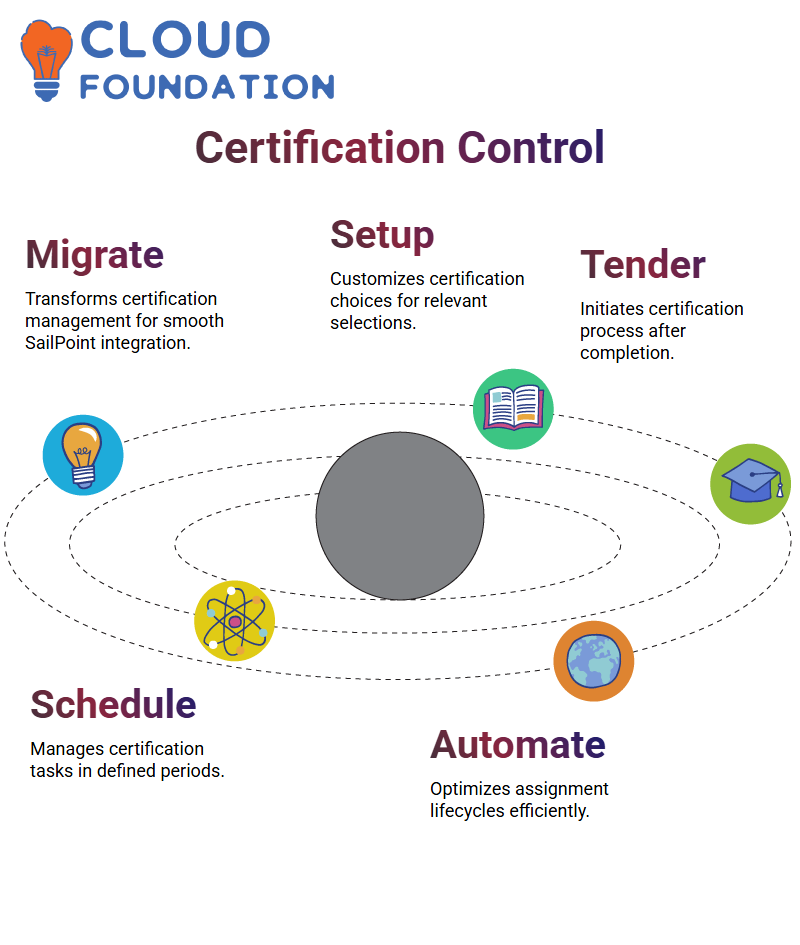How to Manage SailPoint Policy Violations?
What are SailPoint’s Policies?
Working with SailPoint, it is necessary to operate policy violations competently. Instances could arise where the rules are conflicting, leading to the rejection of the request.
So, how can the problem be solved? SailPoint proposes numerous parameters that help us smoothly sail through these elaborations.
A case in point is the parameter ” Request with Violation”.
If the request is blocked due to a policy, activating this variable permits the request to be submitted despite a conflict.
I remember when a client wanted this quality, but I was initially not informed about how it could be done.
I discussed this with developers, and later, I realised that employing the SailPoint built-in variables makes the task simple. This had been an observant experience!

Types of Policies in SailPoint
SailPoint has a variety of stock policies that are designed to meet different business stipulations.
Some of the frequent policies used are Role-based Separation of Duties (SOD), Entitlement-based SOD, Productive Entitlement SOD, Activity Policies, etc.
For example, organisations ensure no user is assigned multiple and simultaneously conflicting jobs. In that way, they avoid any regulatory penalties and, at the same time, decrease the possibility of unauthorised access.
SailPoint Policy Management
User policy control becomes tricky in ID management, but SailPoint can make it as easy as tying a boot.
Whenever we set the access controls, we ensure that users are only given the requisite permissions, eliminating the exposure of unnecessary privileges.
It may be a widespread perception that there are multiple policies in the local environment. In contrast, in practice, we see just two or three primarily responsible for controlling entitlements.
The submission model comprises three main segments: policy management, access certification, and risk scoring.

Out of the three factors, access certification is far prevailing. In comparison, policy management and risk scoring are not frequent, yet they have a key role in governing entitlements.
Applying SailPoint, we usually delimit one or two policies, mainly permissions.
Many organisations encounter difficulties when policy implementation is at hand.
The root cause is that the decision-makers are usually not well-informed about business necessities. I’ve been covering many large international clients, most of whom do not know which policies to set.
By applying SailPoint to make restriction or approval rules, we can author policies that offer fine-grained access controls through which we can limit entitlements, if obligatory, so that there are no access conflicts for users.
Policy Rules in SailPoint
One of the operations that represent policy rules as the most flexible in SailPoint is easily the concurrent creation of parts in SailPoint like SOD (Segregation of Duties) and their direct definition as conflicting duties to stop the crossing of permissions and thereby prevent unauthorised access.
For the prototype, I created rules to affirm that allocating users to Accounts Receivable and Accounts Payable simultaneously is impossible.
On the one hand, SailPoint permits assigning multiple rules to one policy, and I have found it specifically valuable for cross-conformance within the confines of different departments.
On the other hand, the stand also enables you to examine policies capitalising on the simulation mode to identify and correct any violations in the implementation upgrade.
Appreciation of SailPoint Policy Violations
Effectively executing access identity management is imperative, and SailPoint is a central player in managing policy violations well.
Routines such as identity cube refreshments and service performed by SailPoint each day are an elementary part of access control.
When the system identifies a policy violation, it transmits the imperative work items and sends notices to the managers or owners responsible for the policy violation.
These violations are of utmost seriousness, and the system sees that every case has an applicable owner through the work item system.
SailPoint is the identity management solution that increases security and extends the competence of the organisational system. Establishing policies in SailPoint is key to successfully executing access-related tasks and dealing with permission conflicts.
SailPoint is an excellent system with a fantastic process for resolving non-conformity with the company’s rules. Whenever a manager of an activity occurs, an alert will be automatically generated to the owner and other administrators, who can follow up with their corrective actions.
Enterprises can set up escalation methods and cues in SailPoint to react immediately to policy violations.
Proper policy management can fortify security and simplify access control for the company.
SailPoint Policy Scheme Testing
To get familiar with SailPoint, one should examine different policy scheme settings. Initially, make a policy within the bounds of SailPoint and change the value of the policy scheme variable. Afterwards, you can submit an access request by setting it to ‘none’.
Then, alter it to ‘continue’ and observe what it looks like when SailPoint is dealing with offences.
Deploy the keyword ‘interactive’ to try the real-time regulation, then put ‘fail’ to get the highest conformity.
It is the level SailPoint will accommodate according to your organisation’s needs.
SOD Policies in SailPoint
Developing Role-based SOD policies in SailPoint is an easy thing to do, where the Administrators identify distinct duties that should not be combined and then assigned to a one user, e.g., manager with permission to approve but not with the submission of the document.
Once these policies are created, SailPoint automatically implements access constraints.
Users are thus only able to work within the bounds of their functions while unauthorised access is minimised.

Policy Exception Management in SailPoint
Many a time, the security stipulations of many clients are disparate. Some may insist on the conditions being switched off for a particular situation. In contrast, others may have outliers in the policy control with them.
SailPoint submissions make different selections regarding the applications’ accordance: ‘None’ (when the templates are not observed), ‘Continue’ (when the violations are found but the access is possible), and ‘Interactive’ (when the violations lead to the access being denied).
The explanation of the settings above renders administrators capable of being well-informed about establishing the policy.
Policy Violation Resolution Guide
SailPoint hands over numerous alternatives whenever a policy violation is to be addressed.
As a manager or policy owner, you must carefully deliberate on the details of the violation and select a suitable action.

The three main varieties are to consent to the violation, to correct the violation, or to certify the identity.
If you want to go with the violation, you can set an expiration date and write the required comments. Nevertheless, violation correction means removing privileged permissions that do not conform to the SailPoint policies.
Discernment Policies in SailPoint
Policies are distributed to hand out or spread as bulwarks for a company and are implemented to ensure that employees conform to predefined rules and regulations.
In SailPoint, the policies are set to control users’ access rights and safeguard security. What constitutes a policy?
A policy is an agreement according to which every employee should behave. SailPoint grants businesses the tools for implementing such policies, which authorise them to maintain security and compliance. These policies are just the thing that will specify user parts and access permissions.
Certifying User Access with SailPoint
The user certification process in SailPoint is essential in confirming that a user’s access is valid. Certified access enables professionals to perform tasks and activities in line with their job duties and thus drive growth and development within the bounds of the company.
Businesses are employing SailPoint to ensure that certification campaigns occur systematically and access is approved in a structured sequence.
First, the manager executes the SailPoint-powered certification process and assigns reviewers to decide whether a user should keep the current permissions. The overhead of unauthorised access is significantly reduced by this practice, and at the same time, the identity governance is made in the spirit of the regulation.
SailPoint’s Certification Types
What I find great about SailPoint is its range of certification types, which can be tailored to fit different targets as well.
In my real-world projects, manager certifications, entitlement owner certifications, and target system certifications are the three types I usually work with.
Applying these certifications makes it easier to conduct the process of access appraisal while still aligning our activities with the needs of the business.
SailPoint can help me through the process and approve me to pick the programs, check characters, and identify policy violations, among other functions.

Five Phases of SailPoint Certification
The process of SailPoint certifications involves five stages, i.e., Staging, Active, Challenge, Revocation, and End.
Staging is the initial stage, where I can check access before conveying a certification. When I am sure, I go to the active stage, where reviews of access are created and managers make the reviews.
Managers can remove or update access based on their evaluations, and SailPoint informs the users quickly.
Certification Management in SailPoint
Here is an elaborate migration of the certification management transformation from SailPoint that is effortless and smooth. It will also help the readers understand the special features of SailPoint Identity now.
The first thing we must do is unmark any certification choices from the performance upkeep tasks. In this way, we would take the energy out of SailPoint as we move along to inspect the futures of adaptation.
When creating a new certification setup, SailPoint makes it possible for us to select the checkboxes that are most relevant to what we want.
This stops the situation of always depending on general performance support tasks that typically isolate in real-time projects.
We use SailPoint to remove certification assignments from the regular repair tasks, of course, and instead, we launch the certification tendering process immediately after the certification being fired is completed.
Following this, we divide the certification process into two independent and productive parts, one of which is certification trending, which is managed from SailPoint.

Certification Tasks Scheduling with SailPoint
For organisations exploiting SailPoint, we only schedule the certification tasks in the certification period, e.g., quarterly cycles.
The result is what is manageable and minimises the number of runs, which are not imperative at other times.
SailPoint permits us to take time off for vacation and reschedule for live projects only when necessary.
This way, we get a complete and obligatory assignment lifecycle that is fully automated and well-timed by the project’s demands.
With SailPoint, I can activate only particular certification tasks, such as dealing with one manager at a time. This degree of control makes SailPoint a perfect solution for access reviews and substantiation processes.
SailPoint Job Training
What captures me most about SailPoint is how suitable their plan is for interviews and job organisation.
It’s about the theory and fundamental action skills that can make you noticeable in the SailPoint job market.
Those concrete characters and details that can distinguish you from other candidates are the very things we talk about
The pinpoint of SailPoint on real-world application implies that you’re not only learning, but you’re also practising. At the same time, you are learning the latest things without the goal of your learning just being for the sake of the competition.
If you’re moving into a new SailPoint position or taking upskilling for the one you already hold, this course will prepare you to solve any challenge easily.
I have been the direct recipient of learning SailPoint’s primary facets, which has led to my empathy for what I can employ in my job daily.
This is the part where I can fearlessly say that SailPoint is indeed the technology that no longer wears the shirt off your back; it is rather a power that helps you to develop your job.
SailPoint Certifications
SailPoint features can be easily turned on or off, and each phase’s time frame can be set, etc.
I can vary periods of presence, struggles, and more, so the certification perfectly matches the customer’s requirements.
With SailPoint’s automation capacity, it is guaranteed that I will be able to provide on time and help me attain my targets successfully.

Navya Chandrika
Author



